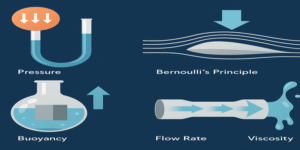In the field of strategic management, conducting an internal analysis is an essential complement to an external environment analysis. While external analysis identifies opportunities and threats in the broader environment, internal analysis focuses on assessing the resources, capabilities, and core competencies that underpin organisational performance (Grant, 2019). This process allows organisations to recognise both their strengths and weaknesses, providing the foundation for developing strategies that align internal potential with external market conditions.
1.0 Defining Internal Analysis
Internal analysis refers to the systematic evaluation of an organisation’s financial health, operational efficiency, human resources, and organisational culture (Hitt et al., 2021). Through this evaluation, managers can determine whether their organisation has the necessary capabilities to pursue chosen strategies. A strong internal analysis not only identifies existing competencies but also highlights areas where improvements are required to achieve long-term competitiveness.
For instance, a firm with strong customer service but weak supply chain management may decide to invest in logistics technologies to address inefficiencies, thereby achieving a more streamlined operation (Barney & Hesterly, 2019).
2.0 Theoretical Foundations: Resource-Based View (RBV)
The Resource-Based View (RBV) is one of the most widely used frameworks for internal analysis. It suggests that sustainable competitive advantage arises from unique, valuable, rare, inimitable, and non-substitutable (VRIN) resources and capabilities (Barney, 1991). These may include tangible resources (financial capital, physical assets) and intangible resources (brand reputation, intellectual property, organisational knowledge).
According to Grant (2019), effective internal analysis requires not only the identification of resources but also the evaluation of how these are combined into capabilities. For example, Apple’s ability to integrate design, innovation, and supply chain efficiency constitutes a core competence that is difficult for competitors to replicate.
3.0 Core Competencies and Competitive Advantage
Core competencies are those unique activities or processes that provide an organisation with distinct advantages over competitors (Prahalad & Hamel, 1990). They are more than isolated resources; rather, they represent the collective learning and coordination within the organisation.
A relevant example can be seen in Toyota’s lean manufacturing system, which integrates operational efficiency, continuous improvement, and employee involvement. This system is recognised as a core competence that has supported Toyota’s sustained competitiveness in the automotive industry (Hitt et al., 2021).
Conversely, failing to identify or develop core competencies can lead to decline. Nokia, once a leader in mobile phones, neglected to strengthen its software development capabilities, ultimately losing market share to Apple and Samsung (Johnson et al., 2017).
4.0 Key Areas of Internal Analysis
4.1 Financial Performance
An organisation’s financial health provides critical insights into its ability to fund strategic initiatives. Strong financial performance enables investments in research and development (R&D), marketing, and expansion. Ratios such as profitability, liquidity, and debt levels are commonly analysed (Grant, 2019). For example, Amazon’s consistent reinvestment of profits into technological infrastructure has reinforced its dominance in global e-commerce (Statista, 2023).
4.2 Operational Efficiency
Operational efficiency refers to how effectively an organisation uses its resources to deliver products and services. Techniques such as lean management, Six Sigma, and process reengineering are widely applied (Knop, 2025). Companies that achieve operational excellence, such as Dell with its direct-to-consumer supply chain model, often gain significant cost advantages.
4.3 Human Resources and Talent Management
Human resources are central to organisational performance. Talented employees, effective leadership, and a positive organisational culture drive innovation and customer satisfaction (Denison, 2020). Internal analysis must therefore assess staff skills, motivation, leadership style, and training programmes. For instance, Google’s investment in employee development and its culture of innovation have become defining strengths (Armstrong, 2012).
4.4 Organisational Culture
Organisational culture shapes employee behaviours and influences the implementation of strategy. Schein (2017) argues that culture represents deeply embedded values and assumptions that guide organisational life. A strong culture that aligns with strategic goals enhances performance, whereas cultural misalignment can lead to resistance and inefficiency. For example, Netflix’s culture of freedom and accountability has been identified as a core strength that fuels creativity and adaptability (Reed Hastings, 2020).
5.0 Tools for Internal Analysis
Several analytical tools help managers structure internal analysis:
- SWOT Analysis: Evaluates strengths, weaknesses, opportunities, and threats, bridging internal and external assessments (Mpundu, 2025).
- Value Chain Analysis: Developed by Porter (1985), this tool examines how primary and support activities add value, enabling identification of cost advantages or differentiation opportunities.
- VRIO Framework: Builds on the RBV, assessing whether resources and capabilities are Valuable, Rare, Inimitable, and Organised for sustained competitive advantage (Barney & Hesterly, 2019).
For instance, Starbucks’ value chain analysis reveals strengths in customer experience management and branding, but also highlights vulnerabilities in supply chain costs (Johnson et al., 2017).
6.0 Strategic Implications of Internal Analysis
The findings from internal analysis have direct implications for strategy formulation. By recognising strengths, firms can leverage them to exploit external opportunities. Identifying weaknesses allows organisations to implement corrective measures before they become detrimental.
For example, Tesla’s strengths in R&D and brand reputation enable it to compete in the electric vehicle market, while its weaknesses in production bottlenecks highlight areas requiring operational improvement (Grant, 2019).
Moreover, internal analysis supports strategic flexibility, enabling organisations to adapt to dynamic market conditions. In industries characterised by rapid technological change, such as healthcare and digital services, regular internal evaluation ensures alignment between resources and strategic ambitions (Schiffelers et al., 2025).
7.0 Challenges in Conducting Internal Analysis
Despite its importance, internal analysis faces several challenges:
- Bias and Subjectivity – Managers may overestimate strengths or underestimate weaknesses.
- Dynamic Capabilities – Resources and capabilities evolve; what constitutes a strength today may become obsolete tomorrow (Teece, 2018).
- Integration with External Analysis – Internal insights must be aligned with external conditions to avoid strategic misfit.
For example, Kodak possessed strong internal capabilities in film technology, but its failure to adapt these competencies to the digital revolution led to decline.
Internal analysis plays a vital role in strategic management by identifying an organisation’s strengths, weaknesses, resources, capabilities, and core competencies. Using frameworks such as the Resource-Based View, VRIO, SWOT, and Value Chain Analysis, firms can evaluate how well their internal environment supports long-term strategic objectives.
By aligning internal resources with external opportunities, organisations can achieve a sustainable competitive advantage. However, this requires a dynamic approach, ensuring that internal capabilities are continuously assessed and adapted to changing environments. Ultimately, organisations that master internal analysis are better positioned to capitalise on strengths, address weaknesses, and achieve enduring success.
References
Armstrong, M. (2012). Armstrong’s Handbook of Strategic Human Resource Management. Kogan Page.
Barney, J. (1991). Firm Resources and Sustained Competitive Advantage. Journal of Management, 17(1), pp. 99–120.
Barney, J. & Hesterly, W. (2019). Strategic Management and Competitive Advantage. 6th ed. Pearson.
Denison, D. (2020). Corporate Culture and Organisational Effectiveness. Organisational Dynamics, 49(1), pp. 59–67.
Grant, R. (2019). Contemporary Strategy Analysis. 10th ed. Wiley.
Hitt, M., Ireland, R. & Hoskisson, R. (2021). Strategic Management: Competitiveness and Globalisation. Cengage.
Johnson, G., Scholes, K. & Whittington, R. (2017). Exploring Strategy: Text and Cases. 11th ed. Pearson.
Knop, K. (2025). Managing Constraints in a Machinery Company Using Theory of Constraints’ Thinking Process Tools: Case Study. Management Systems in Production Engineering. [Online] Available at: https://sciendo.com/pdf/10.2478/mspe-2025-0039.
Mpundu, M. (2025). Stakeholder Management as a Strategic Internal Capability. African Quarterly Social Science Review. [Online] Available at: https://quarterlyreview.net/ojs/index.php/aqssr/article/view/141.
Prahalad, C.K. & Hamel, G. (1990). The Core Competence of the Corporation. Harvard Business Review, 68(3), pp. 79–91.
Schein, E. (2017). Organisational Culture and Leadership. 5th ed. Wiley.
Schiffelers, T., Kapteijns, K. & Hochstenbach, L. (2025). Best Practices in Organising Digital Transformation: Qualitative Case Study in Dutch Hospital Care. Journal of Medical Internet Research. [Online] Available at: https://www.jmir.org/2025/1/e63576
Statista. (2023). Amazon – annual net revenue 2004–2022. [Online] Available at: https://www.statista.com/statistics/266282/annual-net-revenue-of-amazoncom/
Teece, D. (2018). Dynamic Capabilities and Strategic Management: Organising for Innovation and Growth. Oxford University Press.









